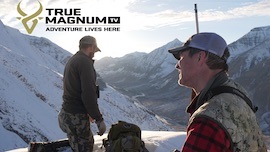This Must Be What It’s Like to Have Hooves
Posted by James Brion on Mar 11th 2020
I’ve heard it said that even the best boot in the world doesn’t necessarily work with every foot. While that is technically true, I’ve found that the best boots are exponentially more likely to fit your foot than cheaper boots. As a mountain hunter, I definitely have my share of stories about hunts gone bad, or gone not as good as they could have due to boots tearing up my feet.
This fall was my first year in Schnee’s Granite II boot. It is hands down and without a close second, the best boot I’ve owned for the purpose. The boot is a pleasure to wear; it fits my foot perfectly, and has just the right amount of insulation for much of the weather I’m in. The combined stability of the ankle and traction in the sole literally made me think, “This must be what it feels like to have hooves”. When climbing these steep Montana hills, the boot just seems to “stick” right where you put it. Contrast that with a boot that doesn’t do that for you and you end up burning excess fine muscle energy with every step. Because this boot performs so much better in the “support and stick” areas than any boot I’ve used, I think it is worth expanding on why this is so important. After three knee surgeries and the same number of multi-month physical therapy rehab sessions, I learned well the concept of proprioception. Proprioception is the body’s mechanism for keeping you balanced. Proprioceptors are in your joints, skeletal muscle fibers, and the interface between muscle and tendon. Your central nervous system uses information from these proprioceptors to fire fine muscle groups to keep you balanced. A boot that is sloppy in the ankle, and slippery on the slope forces more muscle firing to keep you balanced. Take that times tens of thousands of steps and you have a recipe for muscle fatigue, which can then result in a greater chance of a slip and fall, something you can’t afford, for instance, in mountain goat country.
When I send someone on a mountain hunt I don’t tell them to train like they are running a marathon. I also don’t tell them to go on a rigorous weight lifting, mass building session. While the former is great for endurance and the latter is good for strength, neither is optimal for climbing mountains, and either done to excess can actually be detrimental in that environment. Being able to be strong enough to carry a pack uphill on wildly uneven terrain for days on end is key. Obviously you need to either have endurance, or burst and quick recovery attributes. Most people can develop one or the other; few have both, although I’ve had the misfortune to hunt with some who do have both. Those are terrible people to try to keep up with.
Most people getting ready to go on a hunt have limited time to prepare, so I tell my people to at least get into decent cardiovascular condition starting a few months beforehand and then do the exercises that will tune their fine muscle groups. This includes proprioception exercises. This will keep you balanced on the mountain and give your fine muscle groups the tune up they need to not fatigue as quickly on the “marathon” of uneven terrain that awaits them on their adventure.
Notwithstanding the fact that some boots just don’t fit some people, I would give the Granite II boot my highest recommendation for a fall mountain hunt where a small amount of insulation is required. They are an all leather upper boot, so you do have to be prepared to give them the love they require (proper boot dressing) especially when exposing them to lots of water as I have done. Without this it’s likely that the leather would eventually dry and shrink causing a different fit than you were used to when new. Since they are, in effect, mountain hikers and are exposed to way more mileage and crazy scenarios than say my pack boots, I don’t expect them to last 10 or 20 years. But, I’ve had mountain hikers not last a season. I’ve dressed them one time and from the looks of my Granite II’s after season one, I can say they have many seasons left in them. If I were to hazard a guess, I’d say they will likely double the life expectancy of the next best boot I’ve had.


